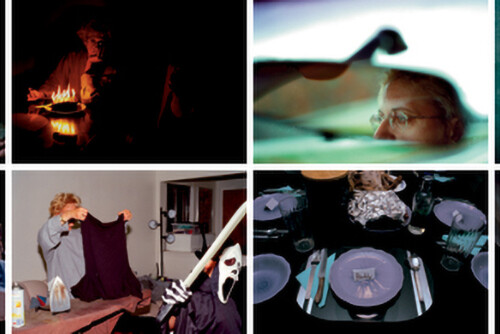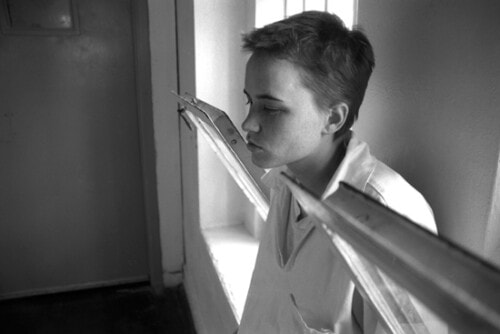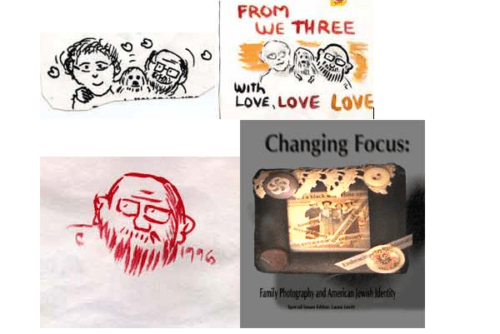Bella is 29 months old; her mother Natalia is in prison. Natalia’s father was incarcerated for most of her childhood; Natalia’s mother was a critical and intrusive caregiver and the mother-daughter relationship was strained. For example, when Natalia was raped at 14, she chose not to tell her mother. Soon after the rape, Natalia became involved with a charismatic, gang-affiliated drug dealer at her high school. An honor student and star athlete, Natalia was 17 and two weeks pregnant with Bella when her boyfriend committed a robbery using her car. Natalia was charged and convicted as an accessory to the crime. While in jail awaiting sentencing, she enrolled in the MIRACLE Project, which provides services to pregnant and postpartum prisoners and their infants. Sentenced to 12 years of incarceration, of which she will serve 6, Natalia gave birth shortly after arriving at the prison and has never lived with Bella. She continues to receive MIRACLE services.
Derek is 10. He and his brother Sean were raised by their mother, Jasmine, who was imprisoned for DUI-related manslaughter when Derek was 6. Jasmine is a second-generation prisoner; when she was a young child, her father was incarcerated for sexually abusing her. After Jasmine’s arrest, her sons lived with their father Mark, a working alcoholic who has a limited criminal history of domestic violence. Last year, Mark moved to the northern part of the state with Sean, and Derek stayed with his paternal grandparents. The family home is 150 miles from the prison and Derek visits Jasmine once a month in ChildSpace, a mother-child visitation project.
Tiana is 6 and Allonya is 3; their father is deceased and their mother Alyssa is incarcerated for drug possession with a sentence enhancement for gang membership. Alyssa’s parents served long prison sentences for robbery and Alyssa was raised by her grandmother. Tiana has lived with Alyssa but Allonya has not. Both girls are in the care of maternal relatives in another state. They have visited Alyssa three times in the last four years. Alyssa, who experiences extreme parenting-related anxiety, participates in classes and groups through the Mothers’ Institute.
Two-month-old twins Jade and Jaden are the youngest of seven children born to their mother Dominique. The twins live with their father, who is on parole. Dominique is serving 13 months in prison for petty theft; this is her second prison term but she has served multiple short jail sentences. She was raised by her father and a series of stepmothers. Dominique’s children are in four different placements; her oldest son is in prison and the next oldest was released from juvenile detention to a foster home just before the twins were born. Dominique’s father brings the twins to visit her in ChildSpace two or three times a month.
By the last half of the 20th century, there was a large body of empirical research documenting intergenerational involvement in the criminal justice system. Studies had established that children of criminal parents were more likely to get arrested or incarcerated than other children and had demonstrated that this phenomenon was likely to occur whether or not the children were raised by their arrested/incarcerated parents.1 In response to these findings, the Center for Children of Incarcerated Parents was established in 1989 with a mission to prevent intergenerational crime and incarceration.
The Center has pursued its mission through the development of model services for children of prisoners and their families. Over 20 years, the Center has designed and conducted more than 60 educational, therapeutic and family reunification projects. These have included a number of core projects such as MotherRight, FatherRight, MIRACLE and ChildSpace; these programs have offered research-based, relationship-focused services for families, and reflect the empirical and theoretical foundations of the Center’s work.
- A. Blumstein, J. Cohen, J. Roth, and C. Visher, Criminal Careers and “Career Criminals” (Washington, D.C.: National Academy Press, 1986); D. Johnston, Children of Jailed Mothers (Pasadena: The Center for Children of Incarcerated Parents, 1991); J. McCord, “A Comparative Study of Two Generations of Native Americans,” in R.E. Meier, ed., Theory in Criminology (Beverly Hills, CA: Sage, 1977); S. Otterstrom, “Juvenile Delinquency and Parental Criminality,” ACTA Pediatrica Scandinavica 33.5 (1946): 1-326; L. N. Robins, “Sturdy Childhood Predictors of Adult Outcomes,” in J.E. Barratt, R.M. Rose & G.L. Klerman, eds., Stress and Mental Disorder (New York: Raven Press, 1979); L.N. Robins, P.A. West, and B.L. Herjanic, “Arrests and Delinquency in Two Generations: A Study of Black Urban Families and Their Children,” Journal of Child Psychology and Psychiatry 16 (1975):125-140; Task Force on the Female Offender, The Female Offender: What Does the Future Hold? (Arlington, VA: American Correctional Association, 1989); J.Q.Wilson and R. Herrnstein, Crime & Human Nature (New York: Simon & Schuster, 1985). [↩]




